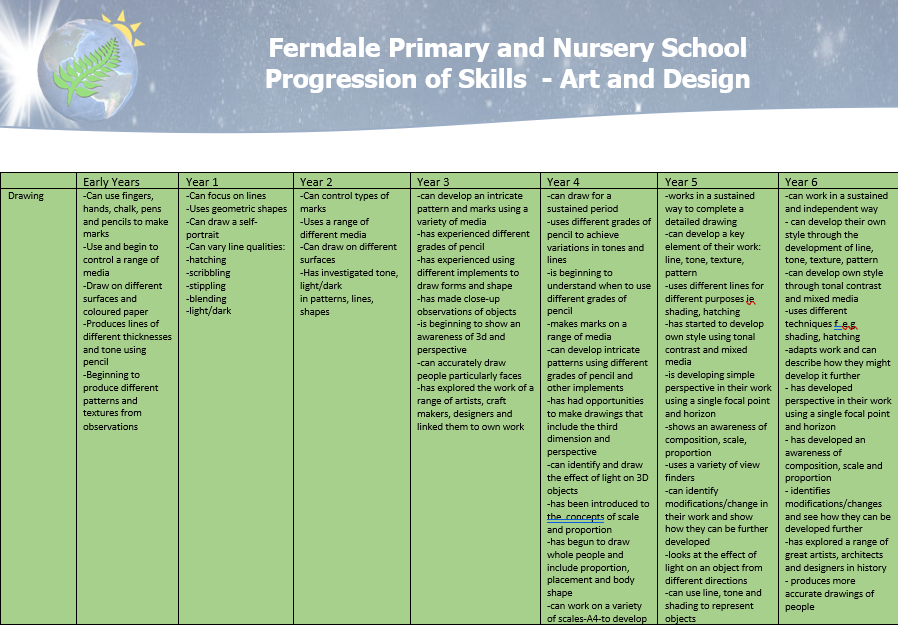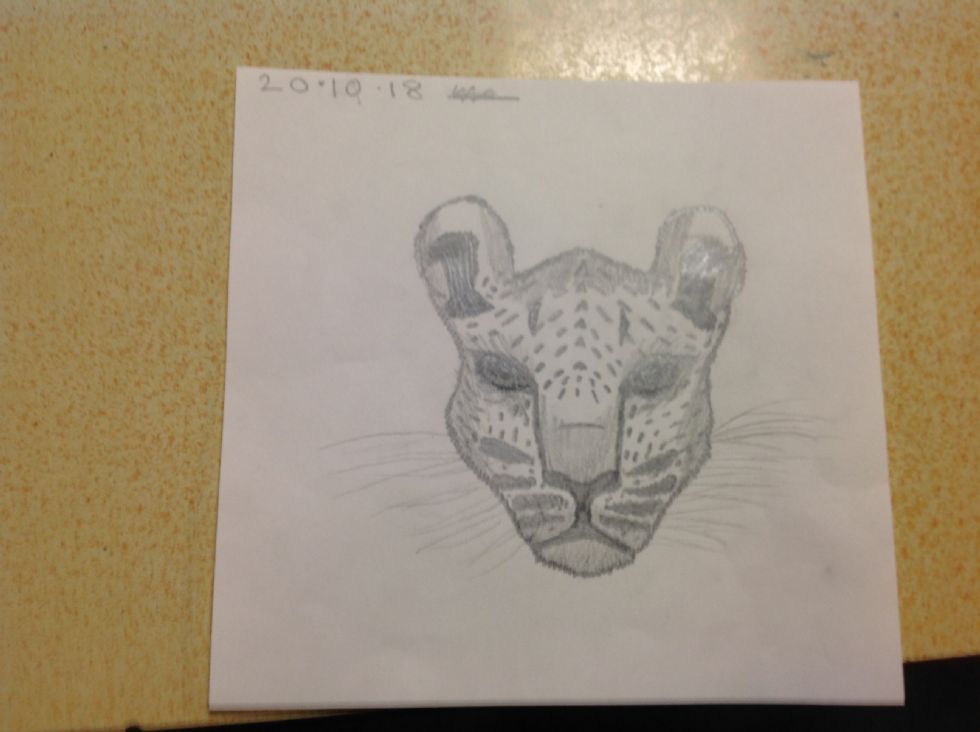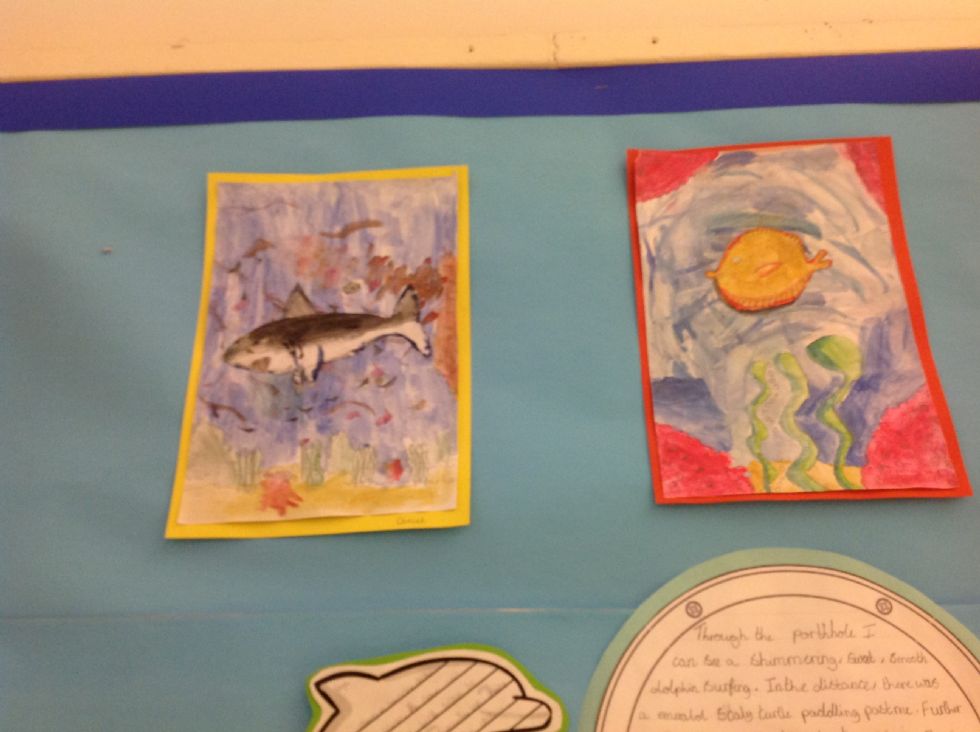Subject Vision (Intent, Implementation, Impact)
Our school learning environment is bright and colourful, showing off the creative talents of both staff and children. At Ferndale Primary and Nursery School our intent is to inspire our children to push their own boundaries of creativity and develop their own ideas and designs so they can use their imagination and creativity to produce work they are proud of.
To implement this we give the children opportunities and stimuli to explore the styles, techniques and designs of famous painters, sculptors and architects both modern and classical. We have our own forest which is a great source of inspiration and materials to support creativity. We provide a curriculum where skills are taught so the children can explore and experiment using different techniques, materials, textures, form, pattern and colour. It also supports work in other foundation subjects. At Ferndale we ensure that through our creative curriculum the objectives in the National Curriculum for Art and Design and Design and Technology are covered. Lessons give children a calm space to explore and reflect on the designs of others and where they learn to express their own opinions. It is where they are able to use their imagination to create their own pieces of Art and Design. Self-evaluation is seen as a positive technique for supporting self-improvement.
We have encouraged local links and have been involved in competitions run by local businesses, worked with members of a local church on a sewing project and have links with the local theatre and the local office of the Royal British Legion all of which have displayed Art work by Ferndale children. Alongside these, the displays in our school and the children’s enthusiasm to create their own pieces of Art and Design, demonstrate the full impact of our creative curriculum.
Purpose of Study
Art, craft and design embody some of the highest forms of human creativity. A high-quality art and design education should engage, inspire and challenge pupils, equipping them with the knowledge and skills to experiment, invent and create their own works of art, craft and design. As pupils progress, they should be able to think critically and develop a more rigorous understanding of art and design. They should also know how art and design both reflect and shape our history, and contribute to the culture, creativity and wealth of our nation.
Aims
-
The national curriculum for art and design aims to ensure that all pupils:
-
produce creative work, exploring their ideas and recording their experiences
-
become proficient in drawing, painting, sculpture and other art, craft and design techniques
-
evaluate and analyse creative works using the language of art, craft and design
-
know about great artists, craft makers and designers, and understand the historical and cultural development of their art forms.
Subject Content
EYFS
In Foundation stage the children follow the Statutory framework for the early years foundation stage
Key Stage 1
Pupils will be taught:
-
to use a range of materials creatively to design and make products
-
to use drawing, painting and sculpture to develop and share their ideas, experiences and imagination
-
to develop a wide range of art and design techniques in using colour, pattern, texture, line, shape, form and space
-
about the work of a range of artists, craft makers and designers, describing the differences and similarities between different practices and disciplines, and making links to their own work.
Key Stage 2
Pupils should be taught to develop their techniques, including their control and their use of materials, with creativity, experimentation and an increasing awareness of different kinds of art, craft and design.
Pupils will be taught:
-
to create sketch books to record their observations and use them to review and revisit ideas
-
to improve their mastery of art and design techniques, including drawing, painting and sculpture with a range of materials [for example, pencil, charcoal, paint, clay]
-
about great artists, architects and designers in history.





Website support for Art
Click here for a list of art websites for 4 - 11 year olds, including games and activities













